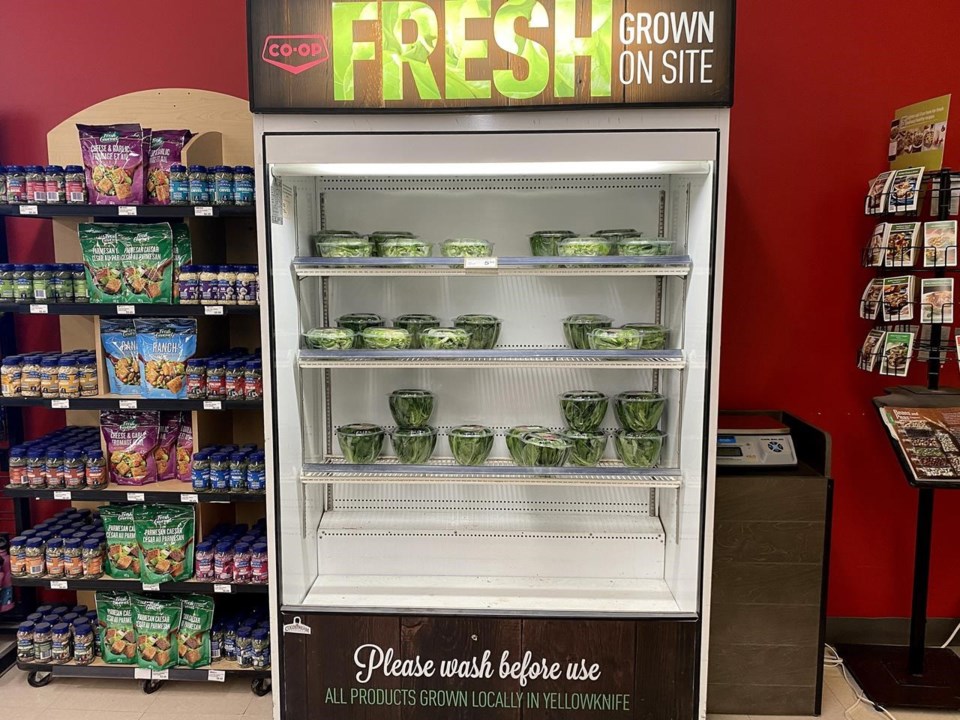INUVIK, N.W.T. ‚Äî Greenhouses are becoming more popular in northern communities as a way to supplement available groceries and improve food security .¬Ý
Some involve hydroponics, a higher-tech way of growing that doesn‚Äôt use soil. For example, the Inuvik Community Greenhouse has a hydroponic trailer parked out front, holding around 2,000 spaces for leafy greens and herbs grown year-round.¬Ý
Co-ordinator Adi Scott said the produce supports the greenhouse’s weekly veggie box program with additional goods going to the food bank.
About a two-hour Canadian North flight away from the Inuvik greenhouse, just behind the Yellowknife Co-op, greens and herbs are being grown in a converted sea can.¬Ý
The hydroponic greenhouse, which opened in February 2019, is fully automated, producing between 200 and 300 packages a week.¬Ý
‚ÄúThe flavour degrades so quickly in perishable foods like leafy greens that having something that is available for sale within hours of being harvested is a totally different product than something that‚Äôs sat on a truck for two days to get up here,‚Äù said Jeff Kincaid, business development manager at the Co-op.¬Ý
The Co-op‚Äôs greenhouse was manufactured by Growcer, a modular farming company that works with businesses, communities and schools to increase the availability of local produce across Canada.¬Ý
Corey Ellis, co-founder and chief executive officer, recalls seeing the price of food on the shelves in Iqaluit during a University of Ottawa student club trip to the Nunavut capital.¬Ý
“That was kind of the light bulb moment,” he said.
Ellis said Growcer has since installed around 75 vertical farms across the country and many projects are focused on capacity-building and training.¬Ý
Some experts, however, are wary of high-tech growing as a solution for remote communities. Andrew Spring, an assistant professor at Wilfrid Laurier University and a Canada Research Chair in northern sustainable food systems, said it can be difficult to fix them if the parts have to come from far away.¬Ý
Besides, hydroponics is generally used to grow greens, and “salad is not the answer to food insecurity,” he said.
What‚Äôs really needed from a food security standpoint are, broadly speaking, ‚Äúthings that go in stew,‚Äù he said -- hearty produce that can be kept for longer, and that can go with traditional fish or game.¬Ý
Kincaid, with the Co-op in Yellowknife, said while the hydroponically grown greens don’t replace food coming from the South, “it is a nice little bonus.”
This report by The Canadian Press was first published July 21, 2023.¬Ý
-- with files from Rosa Saba in Toronto
Emily Blake, The Canadian Press




